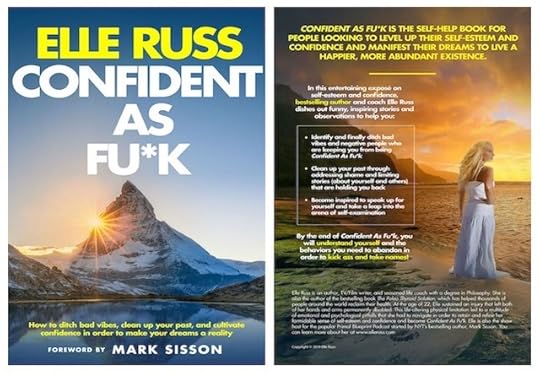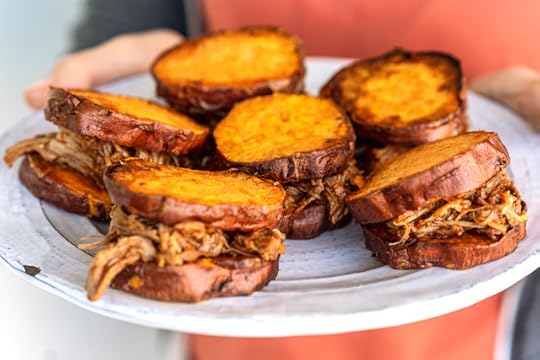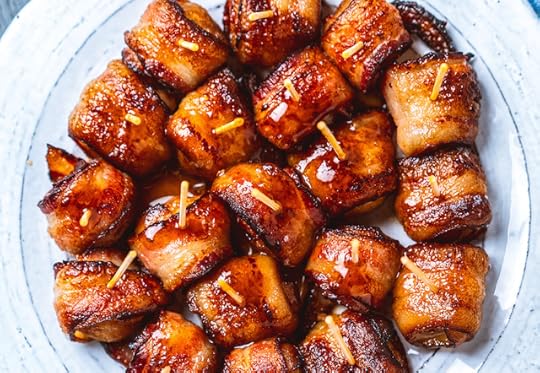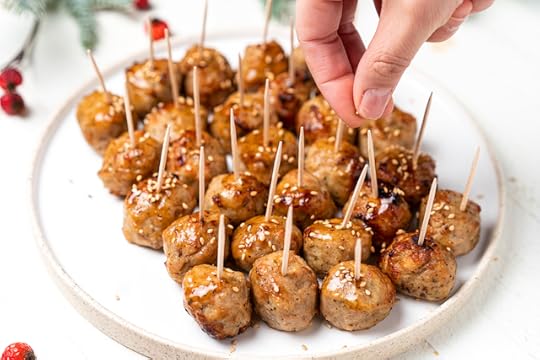Mark Sisson's Blog, page 86
December 22, 2019
Mini Chocolate Hazelnut Tarts
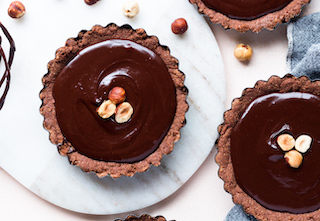 If you’re looking for a dessert worthy of a holiday (let alone a new decade), look no further. Rich, smooth, and decadent on the inside; crunchy and nutty on the outside. The full effect? Nothing short of fabulous. Enjoy as a “small bite” portion with coffee after dinner, or allow yourself the total indulgence of savoring the full tart.
If you’re looking for a dessert worthy of a holiday (let alone a new decade), look no further. Rich, smooth, and decadent on the inside; crunchy and nutty on the outside. The full effect? Nothing short of fabulous. Enjoy as a “small bite” portion with coffee after dinner, or allow yourself the total indulgence of savoring the full tart.
What we love about this recipe (besides everything) is the customizable flavor. Add espresso powder or a flavored extract like vanilla, orange or peppermint for a bold as well as sweet taste.
Tips:
Add sweetener to taste to your crust prior to adding the egg white. For a low-carb, sugar-free option, you can use a sweetener like Swerve or monk fruit. You can also experiment with flavoring the chocolate ganache. Try adding espresso powder, vanilla extract, orange extract, or peppermint extract.
The crust is somewhat delicate but firms up after fully cooling and refrigerating slightly. You may want to refrigerate the crusts for a short time before removing them from their tins to prevent them from breaking.
We used mini 4.5-inch tart tins which made four mini tarts, but you can also use smaller tins if you’d like.
Ingredients:

Crust:
2 cups roasted hazelnuts
5 Tbsp. cacao powder
2 Tbsp. ground flaxseed
2 Tbsp. coconut oil or butter
1 Tbsp. tapioca starch
1-2 Tbsp. Swerve, granulated monk fruit sweetener or coconut sugar
½ tsp. vanilla extract
1 egg white
pinch of salt
Chocolate Ganache:
12 oz. 85% dark chocolate
½ cup + 2 Tbsp. full-fat coconut milk
Optional: pinch of espresso powder and/or vanilla extract
Instructions:
Preheat your oven to 325 degrees Fahrenheit. Blend the hazelnuts in a food processor until a crumbly meal forms. Continue processing until the meal begins to clump together.
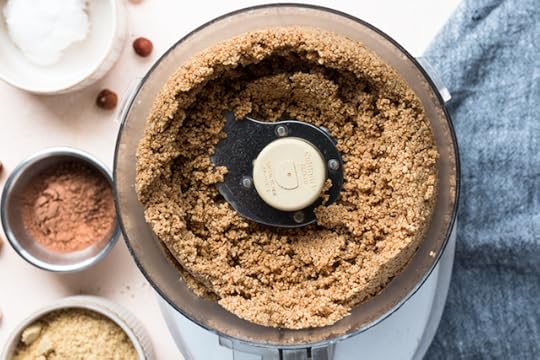
Add the cacao powder, flaxseed, coconut oil, tapioca starch, sweetener and vanilla extract. Process until a dough begins to form. Add the egg white and blend until you have a uniform dough.
Spray a set of mini tart pans with avocado oil spray. Spoon some dough into the tart pan and press the dough on the bottom and sides of the pan. Repeat with the remaining tart pans. Poke a few holes into the bottom of the tart with a fork. Bake the tarts for about 10 minutes, or until they are firm.

Place the chocolate in a heat-safe bowl. Heat the coconut milk in a small saucepan until it starts to bubble. Once it begins to bubble, pour the milk over the chocolate.

Allow the chocolate and coconut milk to sit for a minute, then whisk together until a smooth and silky chocolate mixture forms.
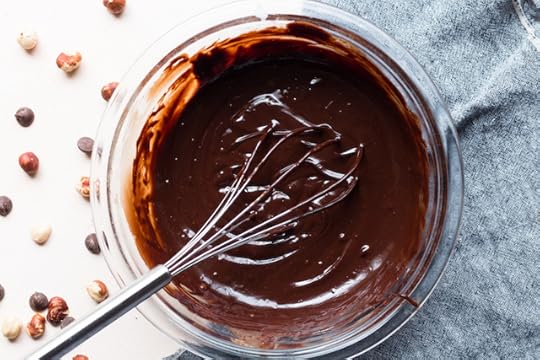
Whisk in any other add-ins like vanilla extract and espresso powder. Spoon the ganache into the hazelnut tarts and top with a few chopped hazelnuts.
Allow the ganache to set and crust to fully cool prior to removing them from the tins.

Nutrition Information (made with Swerve, makes 4 tarts, serving is ¼ of each tart or 1/16 of overall recipe):
Calories: 238
Total Carbs: 13 grams
Net Carbs: 8 grams
Fat: 21 grams
Protein: 5 grams

The post Mini Chocolate Hazelnut Tarts appeared first on Mark's Daily Apple.



December 20, 2019
Weekly Link Love — Edition 60

Research of the Week
Analysis of Stone Age chewing gum reveals the DNA of a hunter-gatherer woman from ancient Denmark; duck and hazelnut remnants from her last meal were also detected.
Once again, insulin resistance is linked to Alzheimer’s.
Going vegan for a month drops B12, iodine, zinc, and riboflavin status. Good luck with all that.
Living in space presents health quandaries for humans, like “reversed blood flow.”
Neanderthal guts carried many of the same species as we do.
New Primal Blueprint Podcasts

Episode 394: Dr. Erin Fall Haskell: Host Elle Russ sits down with Dr. Erin, creator and host of Good Morning LaLa Land.

Primal Health Coach Radio, Episode 39: Laura and Erin chat with Haile Thomas, a health coach wise beyond her years.
Each week, select Mark’s Daily Apple blog posts are prepared as Primal Blueprint Podcasts. Need to catch up on reading, but don’t have the time? Prefer to listen to articles while on the go? Check out the new blog post podcasts below, and subscribe to the Primal Blueprint Podcast here so you never miss an episode.
Media, Schmedia
Why your brain needs exercise, too (but not “brain exercises”).
Homo erectus survived far longer than we thought.
Interesting Blog Posts
Time will proceed, but your abilities don’t have to degenerate.
Social Notes
Everything Else
How growing demand for nuts is affecting our water supply.
Youngsters just don’t know.
This is your brain in Antarctica.
Things I’m Up to and Interested In
I love to see it: Researchers exploring the merits of indigenous knowledge in Australia.
Blog post I found interesting: Cholesterol Fears, Fake News, Statins, and the Age Game: Who Plays?
I’d wear it while campaigning in Carthage: Roman crocodile-skin armor.
Story I enjoyed: How KFC made it in Japan.
Easy money: All you gotta do is meet Dave’s challenge.
Question I’m Asking
If we make it into space long term, what kind of side effects do you think we’ll see? Health, lifestyle, social, etc.
Recipe Corner
Also a great gift idea: chocolate cherry paleo granola.
It’s Christmas soon and you know how to handle binges, so go ahead and make these pecan muffins.
Time Capsule
One year ago (Dec 14 – Dec 20)
How Does Alcohol Affect a Workout? – Well, how does it?
Dear Mark: Broth, Fasting, Coffee, Metformin, and More – A good Dear Mark.
Comment of the Week
“8. Don’t Throw In the Towel and Continue Overeating For the Foreseeable Future or ‘Until the New Year’
Awww, come on! That was my game plan. [image error]”
– Hate to break it to ya, jenny.

The post Weekly Link Love — Edition 60 appeared first on Mark's Daily Apple.



December 19, 2019
Guest Post: Elle Russ On Her New Book Confident As F***
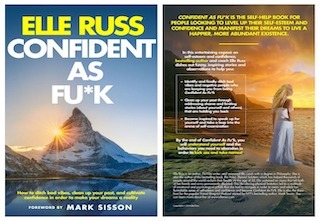 Today’s guest post is written by Elle Russ. Many of you know her as host of the Primal Blueprint Podcast. She’s also the author of Primal Blueprint Publishing’s popular
The Paleo Thyroid Solution
and a brand new book – Confident As Fu*k (foreword by yours truly). She’s been a great colleague and good friend over the years, and I’m happy to share her post today. To learn more about Elle, you can visit her website, ElleRuss.com.
Today’s guest post is written by Elle Russ. Many of you know her as host of the Primal Blueprint Podcast. She’s also the author of Primal Blueprint Publishing’s popular
The Paleo Thyroid Solution
and a brand new book – Confident As Fu*k (foreword by yours truly). She’s been a great colleague and good friend over the years, and I’m happy to share her post today. To learn more about Elle, you can visit her website, ElleRuss.com.
ABOUT CONFIDENT AS FU*K
I am excited to share my new book with the Mark’s Daily Apple audience! Confident As Fu*k is the self-help book for people looking to level up their self-esteem and confidence and manifest their dreams to live a happier, more abundant existence. This book is also for highly confident people to learn how to navigate confidence pitfalls, become more accessible, and refine their nature. In this entertaining exposé on self-esteem and confidence, I dish out funny, inspiring stories and observations to help you:
Identify and finally ditch bad vibes and negative people who are keeping you from being Confident As Fu*k.
Clean up your past through addressing shame and limiting stories (about yourself and others) that are holding you back.
Become inspired to speak up for yourself and take a leap into the arena of self-examination.
By the end of Confident As Fu*k, you will understand yourself and the shortcomings you need to abandon in order to kick ass and take names!
If you have heard me host Primal Blueprint Podcast episodes – you might have gathered that I am a very confident person. My entire life has followed a pattern of attracting friends, strangers, work colleagues, etc that need a helping hand with confidence, self-esteem, self-love, and speaking up. I have not merely been a cheerleader and a coach to these people, because all of them have taught me valuable lessons in return. Ultra confident people often need assistance in the following areas: Vulnerability, active listening, compromise, addiction to struggle, kindness, diplomacy, and receiving.
Whether you are debilitatingly shy and seeking to gain confidence or whether you are ultra confident like me but need to refine your confidence and self-esteem, my intention is that you will be inspired to take control of your life and step into a new, polished, perfectly Confident As Fu*k you – with a boatload of extra self-esteem. It is worth the effort to get there, because confidence applies to every area of our lives – from the boardroom to the bedroom and everywhere in between.
While there are different connotations for the terms confidence and self-esteem, my use of the term Confident As Fu*k is intended to be all-encompassing. You can be confident and have low self-esteem or have high self-esteem but lack confidence. Becoming Confident As Fu*k is about having both, not one without the other. I am not offering you a textbook riddled with statistics and studies involving confidence, but instead – a more intimate and relatable portrait of examples from my life and others – so you can resonate with analytic illustrations of real life human interactions and ways of thinking.
Here is an excerpt from the Foreword to Confident As Fu*k, written by Mark Sisson:
“As you might be able to discern from the title, this is not yet another self-help book filled with platitudes, ACRONYM’s and tidy to-do lists. This is a raw, unfiltered swing for the fences on the touchy topics of self-esteem, self-confidence, and shattering barriers that are in the way of authentically cultivating these esteemed personal attributes. I love how Elle shares her personal story with deep conviction and vulnerability to engage you, but always keeps her eye on you—the reader—to give you something valuable and actionable to implement in your own life. We have enough people on social media shining the spotlight on themselves and telling feel-good stories that provide a brief burst of entertainment and inspiration at best, and are pandering at worst. This book is different, deeper, and more powerful.” – Mark Sisson 2019
GETTING THERE
My Confident As Fu*k nature has not been attained without several blows to it over the years, and at times my confidence needed repairing, refining, and course-correction. Confidence is yours to possess no matter where you are now. I have seen confidence spring up from the deepest wells of self-sabotage, dreadfully low self-esteem, and debilitating shyness. I myself have risen up from some profound punctured holes to my confidence. If you attend to it, confidence and self-esteem continually grows and gets better and better as the years go by. Life is shorter than we want it to be, it is time to step out of the shadows of victimhood and stand in the foreground possessing immense self-esteem and confidence.
CHARACTERISTICS OF Confident As Fu*k people:
They approach challenging situations as something to be conquered and mastered, not hazards to be feared or avoided
They are comfortable with failures and mistakes
They speak with authority
They are dependable, reliable, trustworthy, and on time
They encourage, foster, and celebrate the success of others
They take initiative
They are leaders
They are decisive
They are goal oriented
They focus on their strengths, not weaknesses
They have healthy relationships
They have self-compassion
They are not easily offended
They have the ability to laugh at themselves
They choose reason over reaction
They are constantly learning
They are loving and compassionate towards others
They believe in their own abilities
They use effective communication skills
They feel loved and valued by those around them
They do not feel the need to prove themselves to anyone
They are successful
They are happy
They speak the truth as they see it – they tell it like it is
They don’t care much what other people think of them
They handle stressful situations with composure and ease
They focus on the solution and do not dwell on the problem
They face uncertainty with fortitude, not fear and intimidation
Being Confident As Fu*k is not about walking around telling everyone you are Confident As Fu*k – that would be pontificating confidence. I am not advocating a showy display or a dominating announcement to the world. The ultimate goal is to walk around throughout your days, feeling happy and proud of yourself and who you are in this world, and who you are still becoming. When you are truly Confident As Fu*k – it naturally emanates outward with ease, because it is who you truly are. No matter where you are at in life, it’s time for you to get Confident As Fu*k.
Confident As Fu*k is available on Amazon – CLICK HERE
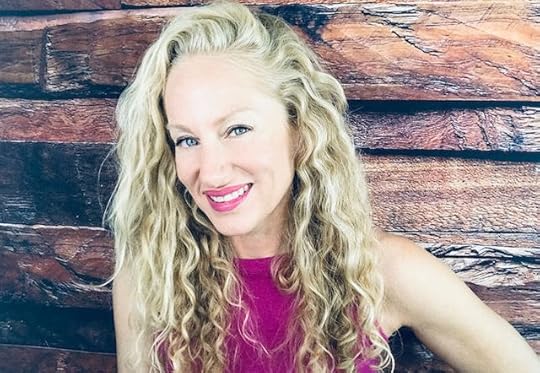

The post Guest Post: Elle Russ On Her New Book Confident As F*** appeared first on Mark's Daily Apple.



December 18, 2019
Post-Binge Biology: What Happens To Your Body When You Overeat (and 8 Things To Do Afterward)
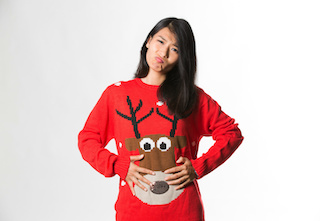 ‘Tis the season for consumption.
‘Tis the season for consumption.
Cookies, cakes, and pies abound. Feasts happen on a regular basis. Candy is given and received as gifts. And there are parties immeasurable—at work, with family, with friends—where calorie-dense, rewarding food is handed out, like, well, candy. The holiday season is a practice in overeating, and it can be very hard to avoid. You may not want to even avoid it; there’s something to be said for letting loose now and again on special occasions, especially when holiday cheer is in the air.
But what happens to your body when you overeat? And what can you do about it?
The type of overeating most people do across the holidays is high-sugar, high-fat, and relatively low protein. These are your cakes and cookies. Your brownies and fudge. Your pie for breakfast. This is the worst kind of overfeeding you can do. Research shows that just six days of high-sugar, high-fat, low-protein overfeeding rapidly increases fat deposition in the liver and muscle. Seven days of overfeeding reduces whole body insulin sensitivity, inhibits glucose clearance, and impairs endothelial function.
If you keep doing it, say, over the course of a month, bad things pile up. You get incredibly insulin resistant. Your liver fat increases. Your body weight and overall body fat increase. Your C-reactive protein increases, an indication of inflammation. A class of antioxidants called plasmalogens also increase, which means your body is fighting oxidative stress.
One problem with the studies is that you have to distinguish between quality and quantity; overfeeding with different foods elicits different effects. For instance, in the study that looked at overfeeding’s effect on lipid metabolism, the subjects overate by eating more cookies, potato chips, and cheesecake and drinking an oil-based liquid supplement. Overeating a bunch of that junk food is different than overeating steak.
In fact, research shows that overfeeding protein has little to no impact on fat or weight gain compared to carbohydrate or fat overfeeding.
Another factor to consider is individual variability. Some people are “obesity prone.” Others are “obesity resistant.” In one study, obesity prone and obesity resistant subjects had different responses to three days of overfeeding. The obesity prone people saw their fat oxidation rates drop during sleep; they burned less fat. The obesity resistant subjects saw their fat oxidation rates unchanged during sleep; they continued burning fat like normal.
So, when we talk about the effects of overeating, we have to keep in mind that the effects will differ between individuals and vary if you’re eating a pound of roast lamb versus eating half a pie. But the general point still stands: Overeating can make you gain weight, gain liver weight, induce oxidative stress, cause insulin resistance, increase inflammation, and make you sicker, fatter, and more unwell the longer it goes on.
But am I too late in saying this? Are you already dealing with the effects of excess? Here are 8 tips for scaling back and minimizing damage.
1. Favor Protein
As explained above, overfeeding protein has more neutral metabolic and body composition effects than overfeeding fat and carbs. Some effects are even positive, like boosts to energy expenditure during the day and during sleep. Load up on the turkey, the lamb, the beef rib roast and keep portions of mashed potatoes, pumpkin pie, stuffing, candied chestnuts, and cookies more reasonable. One advantage of overeating protein is that eating less of the other stuff tends to happen inadvertently.
2. Eat Vinegar
Vinegar, whether it’s organic apple cider vinegar with the mother still swimming in it or standard white vinegar from a two gallon jug, improves glucose tolerance and keeps postprandial hyperglycemia and insulin tamped down. The trick is eating the vinegar (maybe a side salad before the big meal dressed with a vinegar-y dressing) 20-30 minutes before you overindulge.
This is most relevant for meals containing carbohydrate.
3. Exercise
No, exercising after overeating is not “binge behavior” or evidence of an “eating disorder” for most people. It’s simply physiological common sense. You consume a ton of calories, calories in excess of what your mitochondria can process and convert to energy. What makes more physiological sense—just sitting there, letting that extra energy circulate and eventually accumulate on your body, or creating an energy deficit so that the extra energy is utilized?
This isn’t about “calories,” per se. It’s about throwing a ton of energy toward your mitochondria and giving them a job to do—or letting them languish in disuse. It’s not about “weight gain,” necessarily. It’s about energy excess and the oxidative stress and inflammation that results. It’s about not being wasteful. If you introduce a ton of energy and then do nothing, you are wasting that potential.
Besides, research shows that exercise counteracts the short term negative effects of overfeeding, including countering the negative epigenetic effects seen in the adipose tissue of over-consumers. The best time to exercise is immediately after eating. Of course, I wouldn’t suggest doing an intense CrossFit workout with a belly full of food, but something light like the several sets of 10 pushups, squats, lunges, and situps in this study done immediately after does the trick.
4. Accept It As a Positive Experience and Move On
That overeating induces oxidative stress enough to trigger the release of antioxidant compounds may mean the occasional acute bout of overeating can act as a hormetic stressor that makes you stronger in the long run—provided it stays acute and hormetic. It could actually be good to overeat once in awhile. Yeah, go with that.
5. Have Some Black Tea
I just did a big definitive guide to tea, and it turns out another benefit of the stuff is that it actually speeds up digestion after eating. It beats alcohol, espresso, and everything else that people tell you helps digestion.
6. Go For a Walk
Right after you overeat, a 20-30 minute walk will reduce blood glucose and speed up gastric emptying—helping you process the meal much faster and reducing the feeling of fullness. Longer walks are even better and can also reduce the postprandial insulin spike. It has to be immediately after though; waiting even 30 minutes will suppress the effects.
7. Get Out Into the Cold
It’s the perfect season for cold exposure (in most places). Even mild cold exposure—just 18°C or 64.4°C for 2.5 hours—is enough to increase energy expenditure without increasing hunger or subsequent food intake. That’s downright comfortable for a lot of people. If you went out into sub 50°F weather, I bet you could get the same effects even faster.
8. Don’t Throw In the Towel and Continue Overeating For the Foreseeable Future or “Until the New Year”
A consistent finding in the literature is that people gain weight during the holidays and never quite lose it. They don’t do this because they had an extra slice of pumpkin pie at Thanksgiving or five cookies on Christmas morning. They gain and retain the weight because they consistently overindulge for the entire duration of the holidays. They figure “Oh, I ate badly yesterday, which means this week is shot. I’ll just do better next Monday,” and then keep that mindset going for months.
Well, one way to break that cycle is to stop that “this week/month is shot” mindset. No, just because you ate badly yesterday doesn’t mean you should eat badly today and tomorrow. That will compound your problems and dig an even deeper hole. Stop overeating immediately.
Overeating happens. It’s okay, or even beneficial if used judiciously. There’s nothing like filling your belly with your grandma’s signature dish, or really letting loose with your favorite people in the world. Humans are feasters by nature. We like to make merry and eat big to ring in the good times. Just make sure you contrast it with leaner days. (Intermittent fasting around the holidays is great for this.) A feast no longer qualifies as a feast if you do it consistently. A party’s not a party if you party every day. Contrast is the stuff of life—heed that rule and all will be well.
How do you approach holiday overeating? What do you do to counter the effects? What physical behaviors and mental models do you adhere to? Let me know in the comment board.
Take care, everyone, and happy feasting!

References:
Surowska A, Jegatheesan P, Campos V, et al. Effects of Dietary Protein and Fat Content on Intrahepatocellular and Intramyocellular Lipids during a 6-Day Hypercaloric, High Sucrose Diet: A Randomized Controlled Trial in Normal Weight Healthy Subjects. Nutrients. 2019;11(1)
Parry SA, Turner MC, Woods RM, et al. High-Fat Overfeeding Impairs Peripheral Glucose Metabolism and Muscle Microvascular eNOS Ser1177 Phosphorylation. J Clin Endocrinol Metab. 2020;105(1)
Leaf A, Antonio J. The Effects of Overfeeding on Body Composition: The Role of Macronutrient Composition – A Narrative Review. Int J Exerc Sci. 2017;10(8):1275-1296.
Schmidt SL, Kealey EH, Horton TJ, Vonkaenel S, Bessesen DH. The effects of short-term overfeeding on energy expenditure and nutrient oxidation in obesity-prone and obesity-resistant individuals. Int J Obes (Lond). 2013;37(9):1192-7.
Bray GA, Redman LM, De jonge L, et al. Effect of protein overfeeding on energy expenditure measured in a metabolic chamber. Am J Clin Nutr. 2015;101(3):496-505.
Ostman E, Granfeldt Y, Persson L, Björck I. Vinegar supplementation lowers glucose and insulin responses and increases satiety after a bread meal in healthy subjects. Eur J Clin Nutr. 2005;59(9):983-8.
Solomon TPJ, Tarry E, Hudson CO, Fitt AI, Laye MJ. Immediate post-breakfast physical activity improves interstitial postprandial glycemia: a comparison of different activity-meal timings. Pflugers Arch. 2019;
Heinrich H, Goetze O, Menne D, et al. Effect on gastric function and symptoms of drinking wine, black tea, or schnapps with a Swiss cheese fondue: randomised controlled crossover trial. BMJ. 2010;341:c6731.
The post Post-Binge Biology: What Happens To Your Body When You Overeat (and 8 Things To Do Afterward) appeared first on Mark's Daily Apple.



7 Easy Primal Holiday Appetizers
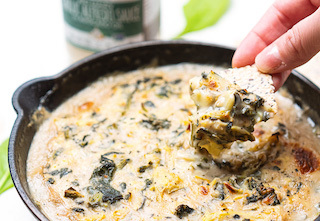 A Primal buffet is no ordinary buffet. Primal types are used to real food after all, and we don’t shy away from the rich, meaty and decadent. We expect flavor. We expect satisfying fare—even when it’s in the form of “small bites.” Whether you’re hosting the party or contributing to someone else’s spread, we’ve got seven tasty and filling recipes that will appeal to any taste out there. Bonus: they’re all three ingredients, which means less fuss and more fun for you.
A Primal buffet is no ordinary buffet. Primal types are used to real food after all, and we don’t shy away from the rich, meaty and decadent. We expect flavor. We expect satisfying fare—even when it’s in the form of “small bites.” Whether you’re hosting the party or contributing to someone else’s spread, we’ve got seven tasty and filling recipes that will appeal to any taste out there. Bonus: they’re all three ingredients, which means less fuss and more fun for you.
Pulled Pork Sliders
The ultimate big “small” bite…
Easy Spinach Dip
FYI, this will be gone in a New York minute.
Bacon-Wrapped Water Chestnuts
Can we just call this dinner?
Baked Brie With Cranberries
Serve with good wine and zero apologies.
Teriyaki Meatballs
You’ll want to eat the whole platter, so make an extra for the guests.
Baked Goat Cheese Marinara Dip
A zestier take on traditional dip…
Bacon-Wrapped Stuffed Dates
Because one bacon appetizer is never enough….
Hungry yet? Tell us which one is your favorite—and share other Primal and keto “small bites” you’ll be serving up this holiday.

The post 7 Easy Primal Holiday Appetizers appeared first on Mark's Daily Apple.



December 17, 2019
7 Mistakes to Avoid When You’re Reading Research
 A couple weeks ago I wrote a post about how to read scientific research papers. That covered what to do. Today I’m going to tell you what NOT to do as a consumer of research studies.
A couple weeks ago I wrote a post about how to read scientific research papers. That covered what to do. Today I’m going to tell you what NOT to do as a consumer of research studies.
The following are bad practices that can cause you to misinterpret research findings, dismiss valid research, or apply scientific findings incorrectly in your own life.
1. Reading Only the Abstract
This is probably the BIGGEST mistake a reader can make. The abstract is, by definition, a summary of the research study. The authors highlight the details they consider most important—or those that just so happen to support their hypotheses.
At best, you miss out on potentially interesting and noteworthy details if you read only the abstract. At worst, you come with a completely distorted impression of the methods and/or results.
Take this paper, for example. The abstract summarizes the findings like this: “Consumption of red and processed meat at an average level of 76 g/d that meets the current UK government recommendation (less than or equal to 90g/day) was associated with an increased risk of colorectal cancer.”
Based on this, you might think:
1. The researchers measured how much meat people were consuming. This is only half right. Respondents filled out a food frequency questionnaire that asked how many times per week they ate meat. The researchers then multiplied that number by a “standard portion size.” Thus, the amount of meat any given person actually consumed might vary considerably from what they are presumed to have eaten.
2. There was an increased risk of colorectal cancers. It says so right there after all. The researchers failed to mention that there was only an increased risk of certain types of colon cancer (and a small one at that—more on this later), not for others, and not for rectal cancer.
3. The risk was the same for everyone. Yet from the discussion: “Interestingly, we found heterogeneity by sex for red and processed meat, red meat, processed meat and alcohol, with the association stronger in men and null in women.” Null—meaning not significant—in women. If you look at the raw data, the effect is not just non-significant, it’s about as close to zero as you can get. To me, this seems like an important detail, one that is certainly abstract-worthy.
Although it’s not the norm for abstracts to blatantly misrepresent the research, it does happen. As I said in my previous post, it’s better to skip the abstract altogether than to read only the abstract.
2. Confusing Correlation and Causation
You’ve surely heard that correlation does not imply causation. When two variables trend together, one doesn’t necessarily cause the other. If people eat more popsicles when they’re wearing shorts, that’s not because eating popsicles makes you put on shorts, or vice versa. They’re both correlated with the temperature outside. Check out Tyler Vigen’s Spurious Correlations blog for more examples of just how ridiculous this can get.
As much as we all know this to be true, the popular media loves to take correlational findings and make causal statements like, “Eating _______ causes cancer!” or “To reduce your risk of _______, do this!” Researchers sometimes use sloppy language to talk about their findings in ways that imply causation too, even when their methods do not support such inferences.
The only way to test causality is through carefully controlled experimentation where researchers manipulate the variable they believe to be causal (the independent variable) and measure differences in the variable they hypothesize will be affected (the dependent variable). Ideally, they also compare the experimental group against a control group, replicate their results using multiple samples and perhaps different methods, and test or control for confounding variables.
As you might imagine, there are many obstacles to conducting this type of research. It’s can be expensive, time consuming, and sometimes unethical, especially with human subjects. You can’t feed a group of humans something you believe to be carcinogenic to see if they develop cancer, for example.
As a reader, it’s extremely important to distinguish between descriptive studies where the researchers measure variables and use statistical tests to see if they are related, and experimental research where they assign participants to different conditions and control the independent variable(s).
Finally, don’t be fooled by language like “X predicted Y.” Scientists can use statistics to make predictions, but that also doesn’t imply causality unless they employed an experimental design.
3. Taking a Single Study, or Even a Handful of Studies, as PROOF of a Phenomenon
When it comes to things as complex as nutrition or human behavior, I’d argue that you can never prove a hypothesis. There are simply too many variables at play, too many potential unknowns. The goal of scientific research is to gain knowledge and increase confidence that a hypothesis is likely true.
I say “likely” because statistical tests can never provide 100 percent proof. Without going deep into a Stats 101 lesson, the way statistical testing actually works is that you set an alternative hypothesis that you believe to be true and a null hypothesis that you believe to be incorrect. Then, you set out to find evidence to support the null hypothesis.
For example, let’s say you want to test whether a certain herb helps improve sleep. You give one experimental group the herb and compare them to a group that doesn’t get the herb. Your null hypothesis is that there is no effect of the herb, so the two groups will sleep the same.
You find that the group that got the herb slept better than the group that didn’t. Statistical tests suggest you can reject the null hypothesis of no difference. In that case, you’re really saying, “If it was true that this herb has no effect, it’s very unlikely that the groups in my study would differ to the degree they did.” You can conclude that it is unlikely—but not impossible—that there is no effect of the herb.
There’s always the chance that you unwittingly sampled a bunch of outliers. There’s also a chance that you somehow influenced the outcome through your study design, or that another unidentified variable actually caused the effect. That’s why replication is so important. The more evidence accumulates, the more confident you can be.
There’s also publication bias to consider. We only have access to data that get published, so we’re working with incomplete information. Analyses across a variety of fields have demonstrated that journals are much more likely to publish positive findings—those that support hypotheses—than negative findings, null findings (findings of no effect), or findings that conflict with data that have been previously published.
Unfortunately, publication bias is a serious problem that academics are still struggling to resolve. There’s no easy answer, and there’s really nothing you can do about it except to maintain an open mind. Never assume any question is fully answered.
4. Confusing Statistical Significance with Importance
This one’s a doozy. As I just explained, statistical tests only tell you whether it is likely that your null hypothesis is false. They don’t tell you whether the findings are important or meaningful or worth caring about whatsoever.
Let’s take that study we talked about in #1. It got a ton of coverage in the press, with many articles stating that we should all eat less red meat to reduce our cancer risk. What do the numbers actually say?
Well, in this study, there were 2,609 new cases of colorectal cancer in the 475,581 respondents during the study period—already a low probability. If you take the time to download the supplementary data, you’ll see that of the 113,662 men who reported eating red or processed mean four or more times per week, 866 were diagnosed. That’s 0.76%. In contrast, 90 of the 19,769 men who reported eating red and processed meat fewer than two times per week were diagnosed. That’s 0.45%.
This difference was enough to be statistically significant. Is it important though? Do you really want to overhaul your diet to possibly take your risk of (certain types of) colorectal cancer from low to slightly lower (only if you’re a man)?
Maybe you do think that’s important. I can’t get too worked up about it, and not just because of the methodological issues with the study.
There are lots of ways to make statistical significance look important, a big one being reporting relative risk instead of absolute risk. Remember, statistical tests are just tools to evaluate numbers. You have to use your powers of logic and reason to interpret those tests and decide what they mean for you.
5. Overgeneralizing
It’s a fallacy to think you can look at one piece of a jigsaw puzzle and believe you understand the whole picture. Any single research study offers just a piece of the puzzle.
Resist the temptation to generalize beyond what has been demonstrated empirically. In particular, don’t assume that research conducted on animals applies perfectly to humans or that research conducted with one population applies to another. It’s a huge problem, for example, when new drugs are tested primarily on men and are then given to women with unknown consequences.
6. Assuming That Published Studies are Right and Anecdotal Data is Wrong
Published studies can be wrong for a number of reasons—author bias, poor design and methodology, statistical error, and chance, to name a few. Studies can also be “right” in the sense that they accurately measure and describe what they set out to describe, but they are inevitably incomplete—the whole puzzle piece thing again.
Moreover, studies very often deal with group-level data—means and standard deviations. They compare the average person in one group to the average person in another group. That still leaves plenty of room for individuals to be different.
It’s a mistake to assume that if someone’s experience differs from what science says it “should” be, that person must be lying or mistaken. At the same time, anecdotal data is even more subject to biases and confounds than other types of data. Anecdotes that run counter to the findings of a scientific study don’t negate the validity of the study.
Consider anecdotal data another piece of the puzzle. Don’t give it more weight than it deserves, but don’t discount it either.
7. Being Overly Critical
As I said in my last post, no study is meant to stand alone. Studies are meant to build on one another so a complete picture emerges—puzzle pieces, have I mentioned that?
When conducting a study, researchers have to make a lot of decisions:
Who or what will their subjects be? If using human participants, what is the population of interest? How will they be sampled?
How will variables of interest be operationalized (defined and assessed)? If the variables aren’t something discrete, like measuring levels of a certain hormone, how will they be measured? For example, if the study focuses on depression, how will depression be evaluated?
What other variables, if any, will they measure and control for statistically? How else will they rule out alternative explanations for any findings?
What statistical tests will they use?
And more. It’s easy as a reader to sit there and go, “Why did they do that? Obviously they should have done this instead!” or, “But their sample only included trained athletes! What about the rest of us?”
There is a difference between recognizing the limitations of a study and dismissing a study because it’s not perfect. Don’t throw the baby out with the bathwater.
That’s my top seven. What would you add? Thanks for reading today, everybody. Have a great week.

The post 7 Mistakes to Avoid When You’re Reading Research appeared first on Mark's Daily Apple.



December 16, 2019
I Am Making Gains On All Levels
It’s Monday, everyone! And that means another Primal Blueprint Real Life Story from a Mark’s Daily Apple reader. If you have your own success story and would like to share it with me and the Mark’s Daily Apple community please contact me here. I’ll continue to publish these each Monday as long as they keep coming in. Thank you for reading!
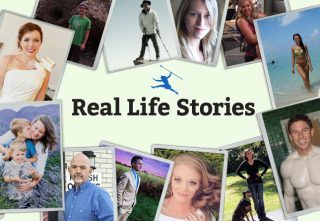
Two years ago, I was walking around our farm with a cane. I have always worked out hard, mostly weightlifting, calisthenics and martial arts. But at the age of 50 I was feeling the cumulative dings of my active youth. A clicky and sore shoulder; pain in my hips. With time I found myself banging out minimum-effective-dose type workouts just to maintain my strength and physique. I had given up on yoga and martial arts because it was no fun with the pain, and they seemed to aggravate the situation.
By the time I took to using a cane to get around the farm, I was really starting to feel sorry for myself. I saw an orthopedic surgeon. He tried to find the right anti-inflammatory that wouldn’t make my stomach bleed. When I suggested a more holistic long-term solution, he replied, “Well, hip surgeries are really good these days.”
As the co-director of Gingerhill Farm Retreat on the Big Island of Hawaii, we have the luxury of constantly tweaking our daily routine. We had experimented with so much already. From gluten-free to paleo. Keto to eat for your blood type. Alternate day and intermittent fasting. I started again from the basics. I figured the pain was inflammation. But from what? We grew our own food and protein and only bought organic for the few things we didn’t grow. Why wasn’t I feeling better?
It took me years to tweak my routine to where I am finally working towards back flips and gymnastics strength progressions. The breakthrough for me came about in a series of “aha” moments. Research led me to mitochondrial health and specifically, the effect of light on our cells. I realized that even though I lived in Hawaii, I was not getting enough sunshine. Worse, I had gotten in the habit of watching YouTube videos at night, zapping myself with harmful blue light in the process. I decided it was time to overhaul my light exposure patterns.
By this time I was so desperately missing the joy of movement, that I adopted “a move it or lose it” philosophy. I started varying my routines to include a much wider range of movement. From slack line to cart wheels, lizard crawls to spinal waves. My wife and I picked up Zouk dance and at the same time started offering a weekly Ecstatic Dance at the farm. I picked up Martial Arts again and trained some of my farm staff so that we could play together.
I tweaked my diet in new ways. Not so much with what I ate, that was already impeccable, but more when. I had come across some of Dr. Satchin Pandas work with time-restricted feeding, and it resonated with me.
Today, we wake and meditate with the staff for thirty minutes. Then, I take some anti-aging supplements I have been playing with. Currently, Resveratrol and NR. I stretch out real good and work out for an hour. I climb ropes, practice muscle ups, work on my press handstands, pistols, and walking on my hands. Whenever I can, I walk barefoot. I run sprints and jump. I still lift weights—deadlifts, squats, again the basics, but I don’t worry so much about the weight.

I still get sore hips sometimes. My shoulder still clicks. But my range of movement is improving, and I am making gains on all levels. Best of all, I am having fun.
Here are my tips, in order of importance:
Try and watch the sun rise and set every day.
Get as much sun as you can without burning, daily. They are lying to us. The sun does not cause cancer. Burning your skin does. This does not change the fact that you need sun. Everything has its dose. Increase your time as your tolerance increases. Do not use sunglasses unless you have to. No sunscreen. Naked is best.
Avoid artificial light after sunset. This means your phone and computer and TV too! LED bulbs are a deal breaker. We use red bulbs when we have to. Candles are better. Use blue blocker glasses when blue light is unavoidable. People will like your red lenses.
Move it or Lose it! Variety and consistency over intensity. Remember to challenge yourself. Always be working on a new skill. It’s good for your brain.
If you ignore these basics, light and movement, I don’t think it matters too much what you eat. You won’t be able to derive nutrition from your food. You could eat organic food in a cave with no sunlight, and you would get sick. And the opposite is also true. Plenty of sun mitigates a host of potential health hazards.
Eat real food. The clock begins with your first cup of coffee, which activates liver enzymes. Try to eat all your calories (no need to count them) in no more than 9 or, better yet, 8 hours.
Don’t rule out the obvious. Drink plenty of clean water. Avoid GMOs and moderate sugar intake. But we know this stuff already. We just don’t follow it all the time.
Following these tips will go far in giving your body the best chance of maintaining its circadian rhythm. I think health is most directly affected by the quality of your rest and recovery. I will be 53 this year and I feel like I am back on track again and excited for what’s to come. Remember a cheat day every now and then is a good thing. It will not offset your progress if you are diligent. We are the sum total of our daily habits. Create your perfect daily routine and stick to it.
Zachary Nathan
Gingerhill Farm Retreat
gingerhillfarm.com


The post I Am Making Gains On All Levels appeared first on Mark's Daily Apple.



Keto For Life Giveaway
 Good morning, everyone!
Good morning, everyone!
I’ve got a success story coming up later today, but this morning I’m thrilled to share that I’m giving away 10 copies of Keto For Life. Whether you’ve been thinking about a copy for yourself or one for a friend or family member who would be interested, register by tomorrow night 12/17/19 midnight Eastern Standard Time to be entered to win!
In Keto For Life, you’ll implement a holistic plan of action to live a long, healthy, and happy life with Sisson’s Four Pillars of Longevity: Metabolic Flexibility, Movement and Physical Fitness, Mental Flexibility, and Rest and Recovery. Through mindful eating, moving, thinking, and resting, you can initiate DNA repair and cellular rejuvenation to actually reverse the aging process and halt cognitive or physical decline.
You’ll discover how to escape carbohydrate dependency once and for all, incorporate the most potent ketogenic superfoods and supplements available to boost brain function and protect against heart disease, dial in your sleep habits and recovery patterns for an immediate energy boost, and successfully manage modern life stressors like hyperconnectivity. And with the game-changing 21-Day Biological Clock Reset, you’ll create a daily longevity routine that feels natural and easy to permanently maintain.
Featuring more than eighty delicious, nutrient-dense ketogenic recipes from leading health and gourmet experts, Keto For Life will unlock your full longevity potential and keep you living well.
How about starting your new year (and new decade) with the detailed program of guidance and support I offer in Keto For Life? Enter today to win one of the free 10 copies! Again, we’ve be closing out this giveaway tomorrow 12/17/19 at midnight EST.
Good luck, everyone, and have a great week.

The post Keto For Life Giveaway appeared first on Mark's Daily Apple.



December 15, 2019
Rosemary Holiday Ham
 ‘Tis the season for impressive meats, and ham is certainly one of the classics. Tender, savory and salty, it’s easy to love—and, thankfully, easy to prepare.
‘Tis the season for impressive meats, and ham is certainly one of the classics. Tender, savory and salty, it’s easy to love—and, thankfully, easy to prepare.
Store-bought hams are typically cured either with nitrites or celery powder and smoked. Since the ham is already cooked, you’re essentially adding flavors you’d like and warming it before serving. Look for a ham without glazes, and with minimal ingredients or added sugar. Ask your local butcher or farmer what they’d recommend. Brands like Pederson’s or Niman Ranch can be found in stores and are part of the Certified Humane Raised & Handled program. Pederson’s also sells a sugar-free ham that is Whole30® approved.
Notes:
When looking for a ham to buy, aim for 1/3-1/2 lb. per person for a boneless ham and up to 3/4 lb. per person for a bone-in ham.
Hams can be bone-in or boneless, and may be intact or spiraled (pre-sliced). Bone-in hams take a little longer to heat up and spiral-sliced hams may be more prone to dry out, so reheat accordingly. Most hams come with instructions for temperatures and minutes per pound. The best way to make sure you’re reheating appropriately is with a meat thermometer that has a probe you can place in the center of the meat. Hams are done when the internal temperature reaches about 140 degrees Fahrenheit.
Servings: 16
Prep Time: 20 minutes
Cook Time: 90 minutes
Ingredients:

1 half bone-in ham, around 8 lbs. (Ours was spiral-sliced.)
¼ cup water
1/4 cup apple cider vinegar
1/3 cup Primal Kitchen® Organic Spicy Brown Mustard
6 Tbsp. chopped rosemary
2 Tbsp. honey
8 cloves grated garlic
1/2 tsp. black pepper
1/4 tsp. ground cloves
4 apples, peeled and sliced
Instructions:

Preheat your oven to 325 degrees Fahrenheit. Place your ham cut side down in a baking dish or roasting pan so the fat cap side is facing up. Use a knife to score the fat cap in a checkered pattern.

Pour the water in the pan and cover the pan tightly with foil. Place the ham in the oven for approximately 40-45 minutes.
While the ham is roasting, combine the apple cider vinegar, mustard, rosemary, honey, garlic, black pepper and cloves.

Remove the ham from the oven. Rub about 2/3 of the mustard sauce all over the ham.
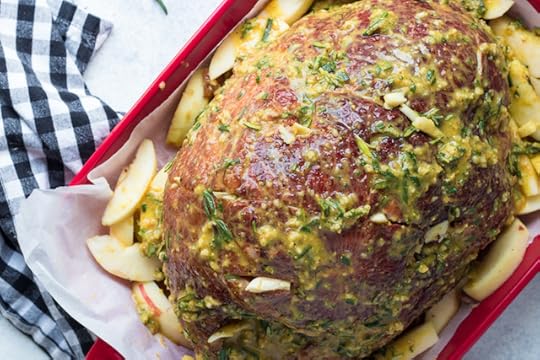
You can also stick pieces of garlic clove in some of the cuts. Insert a meat thermometer probe into the center of the ham and set the desired temperature for 140 degrees Fahrenheit. Arrange the sliced apples all around the ham and toss the slices in any accumulated juices on the bottom of the pan.
Cover the ham again for about 45 minutes. Remove the foil and baste the ham in the pan juices and give the apple slices a toss. Coat the ham in the remaining sauce. Increase the oven temperature to 400 degrees and roast until the internal temperature is reached and the outside is browned and bubbly. You can baste the ham a few times during the last roast if you’d like.

Remove the ham from the oven and plate the ham slices with some of the apples and pan sauce. Serve with your favorite holiday sides, like roasted carrots and Brussels sprouts.

***Nutrition Info Varies Based on Type of Ham
The post Rosemary Holiday Ham appeared first on Mark's Daily Apple.



December 13, 2019
Weekly Link Love — Edition 59

Research of the Week
Blocking fatty acid oxidation when fatty acids are elevated turns out to be a terrible idea.
More potassium in the diet, more IGF-1 in the muscles.
It’s unclear if surgery is effective for rotator cuffs.
Ketones improve cognition in patients with type 2 diabetes.
New Primal Blueprint Podcasts

Episode 393: Tara Garrison: Host Elle Russ chats with Boston marathoner, mother of 4, keto specialist, and strength trainer Tara Garrison.

Primal Health Coach Radio, Episode 38: Laura and Erin chat with Dr. Joan Rosenberg about the power of choosing into vulnerability.
Each week, select Mark’s Daily Apple blog posts are prepared as Primal Blueprint Podcasts. Need to catch up on reading, but don’t have the time? Prefer to listen to articles while on the go? Check out the new blog post podcasts below, and subscribe to the Primal Blueprint Podcast here so you never miss an episode.
Media, Schmedia
There’s a lot going on here.
Interesting Blog Posts
There’s a lot of money to be made in “saving the world from evil meat-eaters.”
Are scientists overusing Mendelian randomization?
Social Notes
You’ll never guess what happened when this vegan influencer went carnivore.
A giveaway.
Everything Else
Vegans would have you believe the ancient artist was painting a warning sign.
America is importing more sugar than ever before.
New Zealand is importing more human skin than ever before.
Can fasting improve breath holding?
Things I’m Up to and Interested In
I haven’t forgotten about wheat: Amylase trypsin inhibitors in wheat promote fatty liver in mice.
I’d give this as a gag Christmas gift: Firelog that makes your house smell like KFC.
Interesting idea: What the return of the freestanding bathtub might mean.
I’d drink this: Venison mezcal.
I’m not surprised: Humans need more protein in stressed states.
Question I’m Asking
Were you guys aware of atomic gardening?
Recipe Corner
Instead of a single ribeye, how about an entire slab of ribeye? And then what if you smoked it?
Pan-seared scallops are unmatched. Oh, and there’s some cauliflower.
Time Capsule
One year ago (Dec 7 – Dec 13)
Why Grip Strength Matters—and 10 Ways to Build It – Build that handshake.
Holiday Round-Up: 28 Cookie Recipes – Cookie recipes to use.
Comment of the Week
“Did, uh, ‘butt-chugging vitamin D’ make it into Keto for Life?”
– Gets an entire chapter, Ion Freeman.

The post Weekly Link Love — Edition 59 appeared first on Mark's Daily Apple.



Mark Sisson's Blog
- Mark Sisson's profile
- 199 followers


